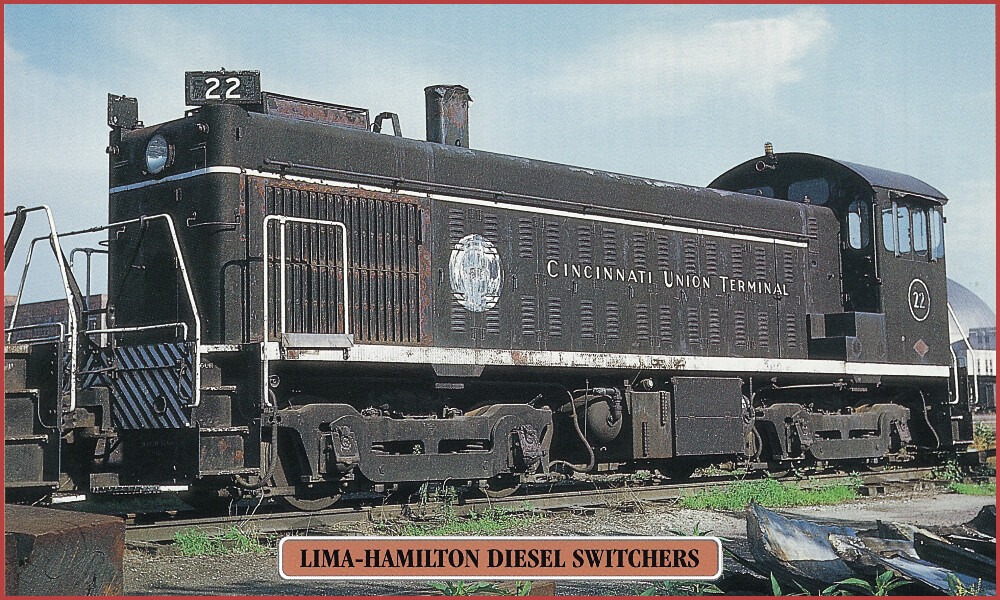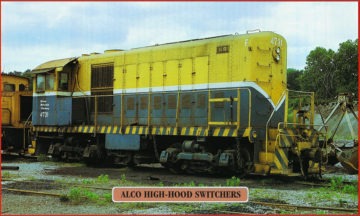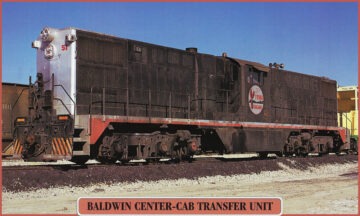This is Part Four of this review of railroad locomotives produced in the middle decades of the 20th century … beginning with a look at the steamers which got the nation through the Second World War period, followed by the birth of diesel-electric locomotives in the 1930s. Part Three picked up following the War — of which this is a continuation of — pretty much covering the early generation period of the units we simply call diesel!
The photos and much of the information in this series have been resourced from a set of three three-ring binders, which was published in 1998 by a European-based company named Atlas Editions and titled Legendary Trains. This set was part of a large collection of both print and visual rail-related materials left to the National Railway Historical Society by the late William Martin, who lived in northern Alabama — as a member of the NRHS Archival Committee, it’s my duty to handle the donation of such collections.
Regarding the photo at the top, I begin by quoting directly from the publication: “Lima, known as the Cadillac of steam locomotive builders, was one of the most progressive and innovative. The firm stuck with the steam market until it was almost too late, then tried to crack the diesel locomotive market but met with limited success.”
It was 1947 before Lima chose to merge with diesel engine manufacturer Hamilton Press and Machinery Company — there was immediately internal disagreement, as some of Lima’s senior management wanted to continue building steam locos — in order for the builder to enter the diesel market.
The first Lima-Hamilton diesel-electric, a 1000-horsepower switcher, was finally produced in 1949. Shortly thereafter came the 750-hp model shown here, one of only six ever built … all sold to this railroad, the Cincinnati Union Terminal, to replace a group of 0-6-0 steam switchers.
Not much more than a year later, Lima-Hamilton would merge with Baldwin Locomotive Works — of course, one of the two giants in the steam locomotive world — which had introduced its first diesels immediately after the end of WWII. While I’ve not seen it written, I deduce that this merger was seen as beneficial to both parties … Lima-Hamilton salvaging something from their rather ill-fated adventure and Baldwin gaining from the innovative technological advances Lima was known for.
If my math is correct, Lima-Hamilton never sold more than 170 units, all switchers with the highest horsepower model rated at 1200-hp. If it weren’t for the scramble by railroads during this period to replace their steam locomotives with the more-efficient diesels, hence buying from any manufacturer able to deliver, the totals would not have been this high. And, nearly half of all sold went to the New York Central and their subsidiaries!
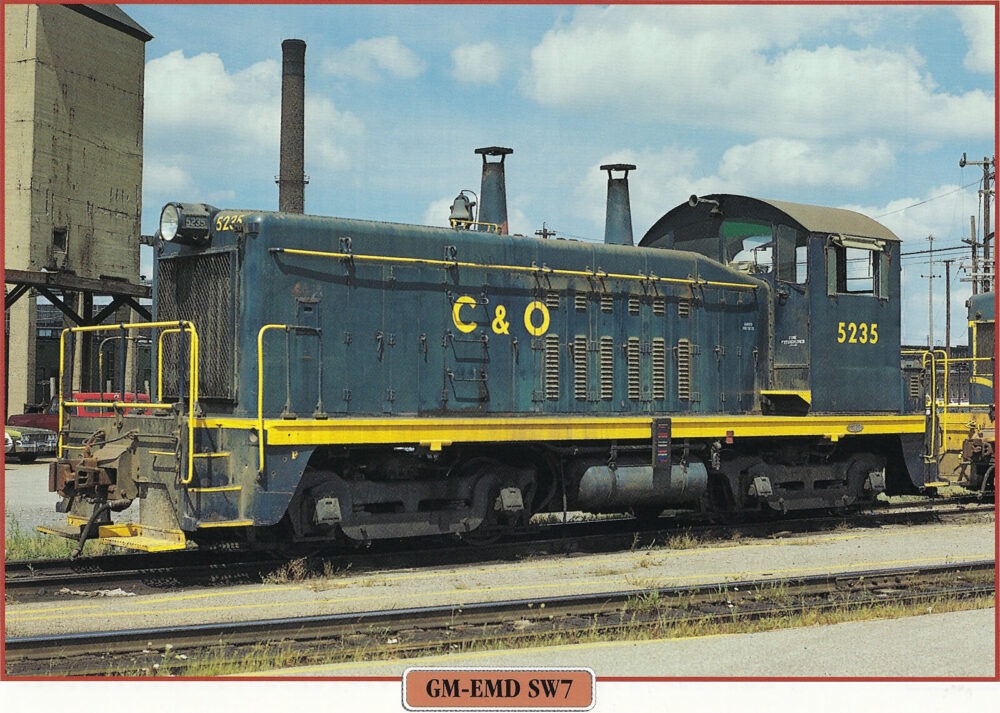
As described in Part Two of this series, “The Early Years,” … the Electro-Motive Division (EMD) of General Motors entered the diesel market in the mid-1930s with a small switcher named the SW1. The SW1 was replaced in 1939 with a slightly higher-powered 1000-hp unit named the NW2, produced for a full decade until 1949. As competition began offering higher-horsepower models, EMD needed to keep up, so it modified its 16-cylinder diesel engine to provide 1,200 hp … which was offered in its new Model SW7, replacing the NW2, which replaced SW1 10 years earlier! Got it straight? There never was an SW2 through SW6.
The SW7 and NW2 both were equipped for multiple-unit control — meaning one engineer could control all of the locomotives when two or more were ganged together for added pulling power — plus were very similar in appearance. Yet, the SW7 experienced a few minor body changes as time passed … even though it was only produced for about 18 months. Still, in that time, nearly 500 SW7’s were built, and almost every U. S. railroad owned at least a few of them, along with industries where they saw action on in-plant trackage, such as in steel mills.
Oh yes, the SW7 was replaced … not by an SW8, rather a SW9!
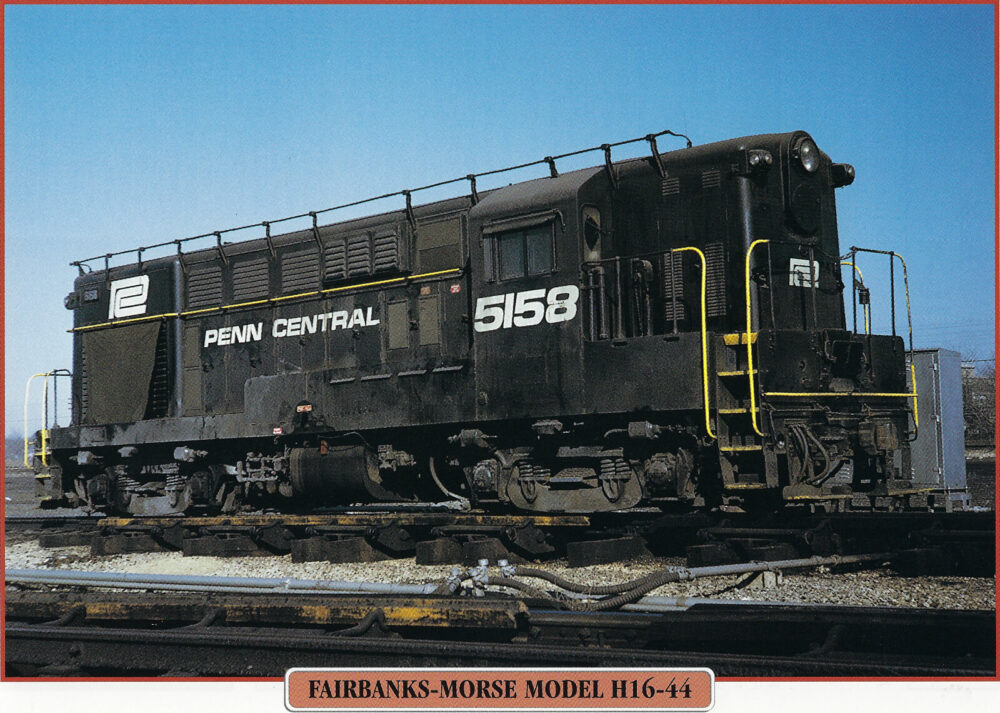
Fairbanks-Morse was a diversified manufacturing company dating back to the 1800s. As the world entered World War Two, the U. S. Navy provided support for the company to design and build a very sophisticated, technically innovative, and powerful diesel engine — known as an opposed-piston engine — which was then widely used in submarines and other ship applications.
As noted earlier, due to diesel’s economic advantages over steam and, hence, the tremendous backlog of orders from railroads was so great, the War Production Board allowed Fairbanks-Morse to start building switching locomotives in 1944.
In 1947, a 1,500-hp road switcher with a body styled by industrial designer Raymond Loewy, the Model H15-44, was introduced. Even though it offered multiple options, such as a steam generator for passenger operation, it still did not deliver large orders. In early 1950, The H15-44 was replaced with the H16-44 … the only real change was delivering higher horsepower. Shortly thereafter, the company also began offering the H20-44 — the “16” and “20” respectively, standing for 1,600-hp and 2,000-hp.
Up until this time, all Fairbanks-Morse locomotives utilized electrical equipment made by Westinghouse. When it ceased making electrical equipment in 1953, the switch was made to General Electric to supply traction motors, controls, and generators. Over the years ending in 1963, 299 of this model were built for use in the United States, Canada, and Mexico.
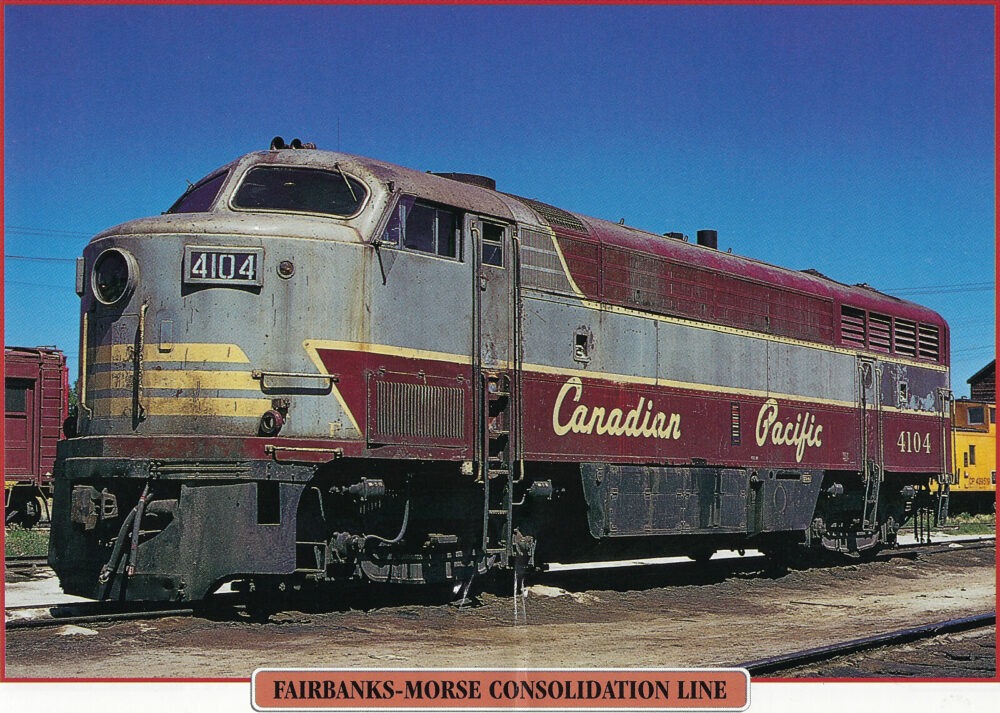
Also, in 1950, the company introduced a new series of freight and passenger locomotives called the Consolidation Line, which was of car body design and offered a building-block approach with hopes of satisfying the varying needs of individual railroads — the standardized body could contain a 1,600-hp, 2,000-hp or 2,400-hp engine. While the overall concept had much appeal, sales were disappointing for two reasons — the high-maintenance Fairbanks-Morse opposed-piston engine was difficult to access in the enclosed car body format, and railroads were beginning to go through a change in direction from cab units to the road switcher concept. Only around 175 were sold over the five-year period during which they were offered.
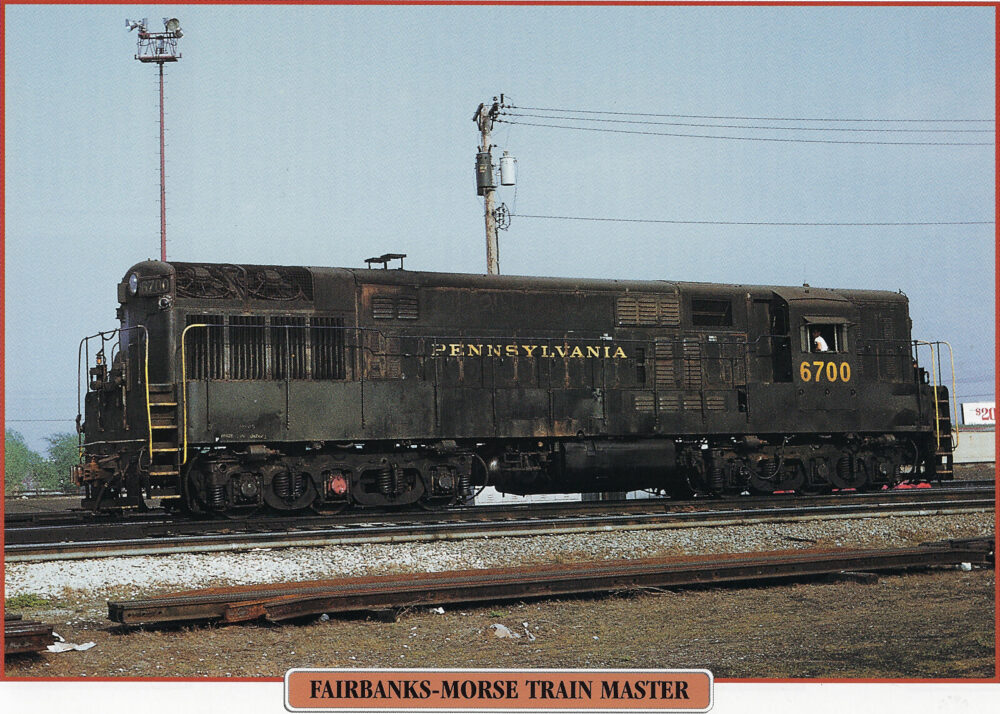
As the headline on the Legendary Trains page states:
“The Train Master was probably the best-known locomotive built by Fairbanks-Morse … the Train Master proved the importance of higher horsepower for faster road service.”
With a 2,400-hp engine having been developed for the Consolidation Line units, in 1953, someone got the idea of installing the engine in a heavy-duty road switcher, as the competitors were still offering similar models with no more than 1,750-hp. While the Fairbanks-Morse marketing focus was on the Train Master as a heavy-duty freight locomotive — with many sold for that purpose — the model also found favor for use in passenger service as the design provided rapid acceleration and speed, desirable attributes for suburban and commuter service.
By the time American railroads were really buying into the concept pioneered by Fairbanks-Morse, the company had decided to exit the locomotive business, producing its last units for the United States market in 1958 … although its last actual delivery would be to a Mexican customer in 1963. A sad ending as this innovative builder would sell fewer than 1,500 units in its years of developing and producing railroad locomotives!
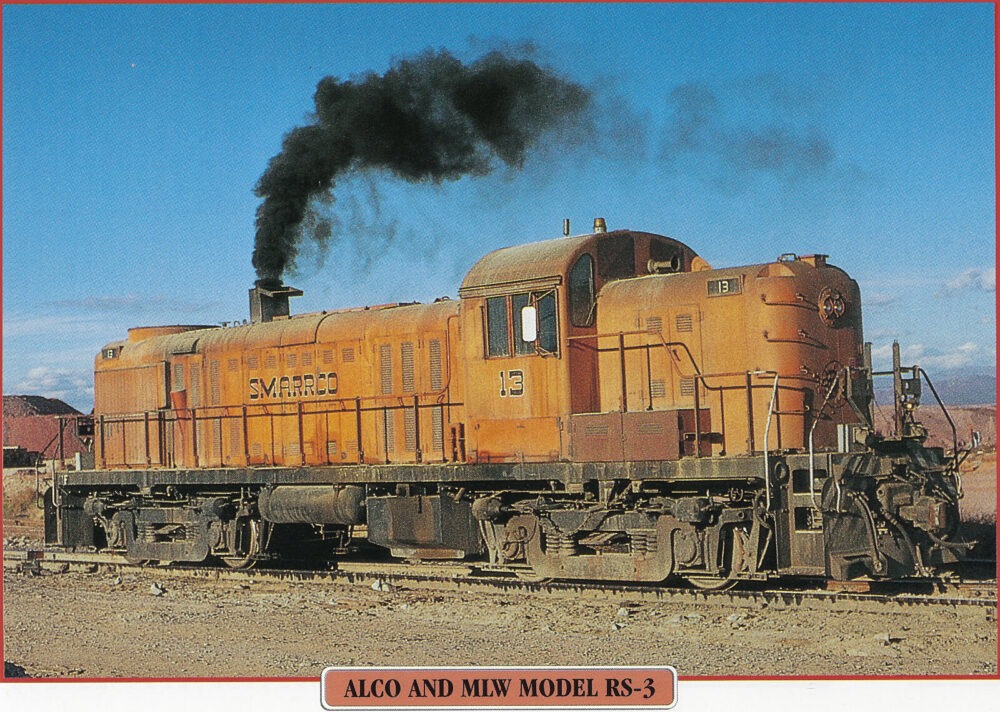
While I normally follow a chronological order––this locomotive, the Alco RS-3 being introduced in 1950 and the Fairbanks-Morse Train Master coming along three years later, it just seemed as making sense to keep the Fairbanks-Morse units grouped together, as there were three in this one review.
As for the RS-3, I liked its appearance from the first time I laid eyes on one. Maybe I liked it because its Legendary Trains page was headlined: “One of the most distinctive and clean-lined diesel road switchers.” With 1,600-hp, it was a very utilitarian moderately-powered unit serving the typical railroad’s needs in passenger, freight, and switching services. Powered by a 12-cylinder turbocharged Alco diesel engine, the traction motors, controls, and generator came from Alco’s Schenectady, New York neighbor, General Electric. The RS-3’s were built from May 1950 through August 1956, and counting the units produced at Alco’s Canadian affiliate, Montreal Locomotive Works, nearly 1,400 were manufactured during that span of years, making it one of Alco’s absolute best sellers!
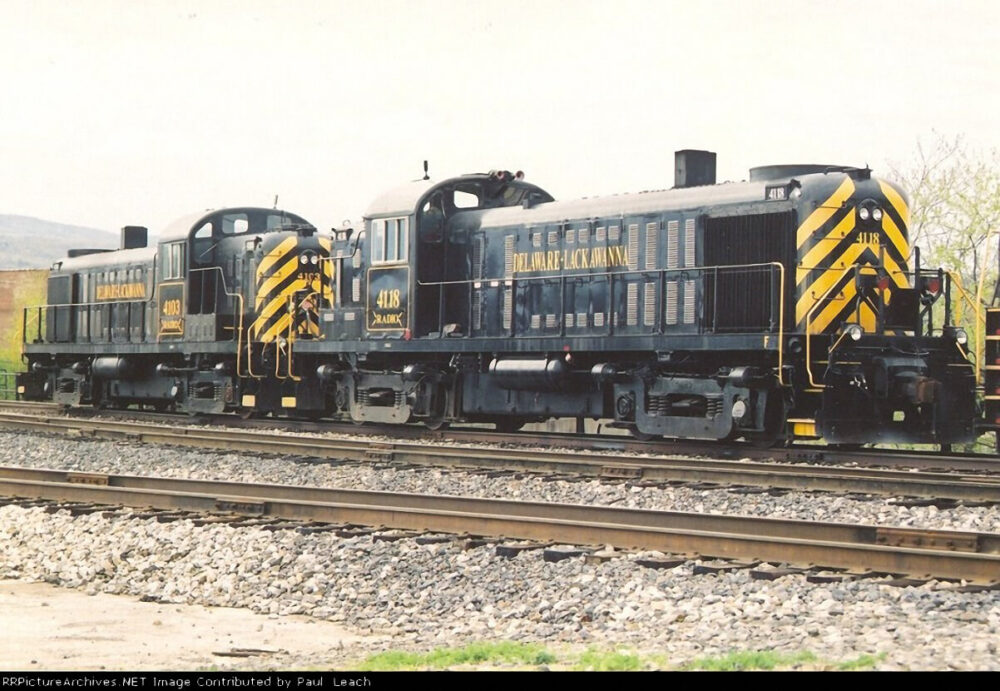
When I hear or see “RS-3,” I immediately think of the Delaware-Lackawanna Railroad in northeastern Pennsylvania where there were, the last I knew, three on the roster and still in active use … usually paired as in this photo or even all three working together.
Now, it’s your turn … if you have any insightful information you’d like to share regarding any of these locomotives and/or builders discussed here, please send it along, and I’ll post it for others to read and possibly learn from. Thank you.
In closing, there’s one more item I must address and give credit where due … the majority of the photos which were used in this Atlas Editions production and, hence, included in this series of Musings were taken by one James J. Buckley.
